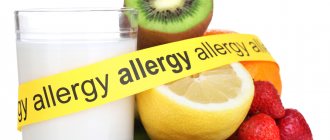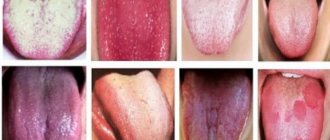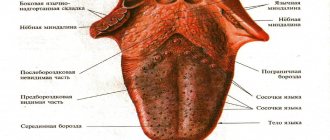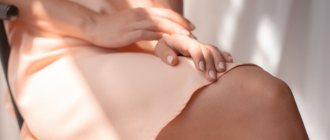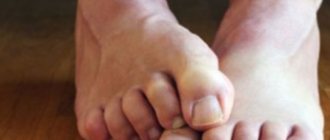Allergy on the face in the form of red spots is a common problem with which patients often turn to dermatologists. To clarify the exact cause of this condition most often requires time and a number of additional studies. To alleviate the condition of allergic dermatitis, modern antiallergic drugs are used, which include Cetrin.
Causes of facial allergies
Atypical reactions of the immune system to foods, chemicals and biological substances can cause rashes, pimples, redness, swelling and itching. The person experiences physical and moral discomfort. The manifestations of allergic reactions are varied and depend on the individual characteristics of the body. Most often, localization is observed on the forehead, temples, cheeks, behind the ears, in the décolleté area and on the neck. The most common prerequisites for allergies are:
- heredity;
- consequences of long-term use of medications;
- unfavorable environment;
- constant stress;
- reduced immunity;
- too high a concentration of certain substances;
- insect bites;
- cold or direct sunlight.
There may be other reasons; you need to approach the problem individually.
Allergies to foods and medications
There is often cross-reaction to the protein in this group, making it difficult to find the source. The speed of onset of symptoms can vary from immediate to a period of 2-3 hours. In the case of medications, the prerequisite is overdose, long-term use, too many drugs taken during the day.
Sun or cold
The body’s response is characteristic not only of winter. This could be water or food at a certain temperature. The appearance of photodermatitis is promoted by internal and external causes. Within a day or a little later after exposure to the sun, soreness and itching of the skin begin to bother. When an allergic rash appears on the face of an adult, treatment should begin immediately, otherwise the situation will worsen with each passing hour. As part of complex therapy, immunostimulating cosmetics such as Laennec are effective. Before use, you should consult with specialists.
Reaction due to eczema
Skin diseases significantly reduce the body's resistance, and any violation provokes their exacerbation. Most often, the reaction appears externally in the form of small bubbles with liquid. The acute form can become chronic, which subsequently leads to relapses.
Errors in diet
Various dietary restrictions do not go out of fashion. There are programs based on the consumption of one or just a few products for a long time, which leads to an oversaturation of the body with certain elements, since in this case there can be no talk of balance. You should not be surprised at the deterioration in well-being, since such restrictions become the causes of severe allergies on the face of an adult, the treatment of which is carried out comprehensively and will take a lot of time.
We recommend
GHC Placental 3D Mask withQ10
Serum concentrate
Repairing cream with a moisturizing effect
Placental antioxidant lotion concentrate
Contact with animals, insect bites
A swollen nose and watery eyes when trying to pet a pet are a true classic of the genre. Mosquitoes, bedbugs and other blood-sucking creatures can also cause itching and redness on the skin. The toxins they inject in large quantities cause a rash, often accompanied by fever. In this case, external agents and antihistamines are recommended; dosages should be confirmed with a doctor.
Allergies due to stress
In addition to nervous tics, there are other reactions to emotional overload. Unconsciously, a person may scratch or clench their hands tightly. If such situations happen regularly, then health problems may begin. Itching, swelling of certain areas, redness, and difficulty breathing appear. The main direction of stabilizing the condition is the prescription of sedatives, breathing exercises aimed at calming the nervous system, ointments and gels to relieve external manifestations on the skin.
Causes of red cheeks
Everyone knows that cheeks turn red in cold weather. After all, when the skin is hypothermic, blood must circulate actively, literally flowing to it, in order to equalize temperatures and prevent frostbite. However, in extreme heat the same thing happens. When visiting a bathhouse, for example, a person can also become very flushed. In this case, the body also struggles with temperature inversions, trying to prevent overheating, and sending blood to the surface of the skin, to ventilated areas, where there is a better chance of cooling it somewhat.
Interesting fact: cheeks often burn along with the nose, ears, and even neck.
Such reactions to temperature changes are completely normal; just warm up or, conversely, cool down, and the blush will go away. If it’s hot, you can ventilate the room and wash with cold water. If it’s cold, you should move to a warm place.
Nutrition can also leave its mark on the color of your cheeks. So, if you eat something spicy, very hot or too cold, your face will immediately turn red. Such a diet cannot be called ideal for a person, because it causes stress in the body, which is expressed in the form of reddened cheeks.
Interesting: Why does hair turn gray? Reasons, photos and videos
An addiction to coffee can also cause an unhealthy blush. If you drink it in mugs every day, facial redness can appear almost constantly. Coffee increases blood pressure and should be drunk in moderation. Alcohol has the same effect. It dilates blood vessels and the cheeks become red.
Facial redness can also occur after physical exertion or intense sports. At the same time, blood flow improves, the vessels dilate, which gives redness. However, as soon as the person calms down and returns to normal, it will disappear.
Types of allergies on the face
If in children the most vulnerable area is the buttocks, where signs appear that indicate certain foods or unfavorable conditions, then in adults this is the nasolabial triangle, eyelids, lips, tongue, neck and hands.
Atopic dermatitis
Chronic inflammatory skin disease. Most often begins in early childhood. The priority prerequisite is genetic predisposition. It can be a concomitant disorder with bronchial asthma and conjunctivitis. There are infant, child and adult forms of the disease.
Hives
Allergies and rashes in the form of pimples on the face, the photo of which most often appears on advertising posters of the newest antihistamines, occurs with a seasonal variant. It is characterized by lacrimation, swelling of the eyelids, obsessive itching, and redness of certain areas of the body.
Food reactions can occur instantly when certain foods enter the mouth and esophagus. Most often they are milk, eggs, red or yellow fruits, and nuts. Peanuts are the most dangerous in this regard.
Contact dermatitis
Recognizable by clear zones of irritation. The causes are hygiene and cosmetic products, chemicals that come into contact with unprotected skin, jewelry, piercings, latex products, extracts and juices of certain plants. It manifests itself in the form of weeping erosions, in place of which dry scales then appear. To understand how to remove facial allergies, you need to find and eliminate the substance that causes your health to worsen. Often a good result comes from moving to another region. This way, it is possible to cut off some of the options; for the rest, you will have to take special tests in the laboratory.
Toxicoderma
A distinctive point is inflammation not due to external factors, but due to the penetration of a provoking substance into the body. In some cases, it can cause secondary damage to internal organs and anaphylactic shock, since it develops rapidly from the ingestion of an allergen from the inside. One way to prevent inflammation is to take antibiotics, especially penicillin. At the same time, timely treatment gives good results.
The alimentary variety is included in a special group; the deterioration of the condition is provoked not by products, but by food additives in their composition. It is quite dangerous due to the fact that it can occur suddenly, since manufacturers do not indicate all the ingredients in the composition.
Quincke's edema
It poses a direct threat to life. In the question of what an allergy on the face and neck looks like in this case, what to do and how to treat it, time is of the essence. Choking occurs quickly, and the slightest delay can have fatal consequences. An acute inflammatory reaction of the body, which occurs locally in the skin and subcutaneous tissue, affects deep layers, including the muscles of the respiratory system, and in a third of cases is localized in the larynx. It is impossible to prevent the development of Quincke's edema. Women suffer from this disorder more often. The diagnosis is made based on the clinical picture and requires medical attention. Signs may persist for several days and disappear gradually. Treatment includes the administration of potent antiallergic drugs. In severe cases, the patient requires urgent hospitalization in an intensive care unit or intensive care unit.
Cheeks are burning and blushing. What do rosy cheeks tell the doctor?
A ruddy complexion has long been considered an indicator of good health. But is it only the blush on the cheeks that can signal this? Why does he appear?
How's normal?
The facial area is rich in blood vessels of different diameters. Usually small vessels are not clearly visible, and therefore the complexion is pale or slightly pinkish.
The reason for the appearance of blush on the cheeks and redness of other areas of the face can be exposure to the cold. Blushing occurs at elevated temperatures, in a stuffy room. Drinking red wine or hot pepper will also add redness to our cheeks.
Could blush be a sign of pathology? It turns out yes. Let's briefly look at some of them.
Increased body temperature. Of course, not every infection is accompanied by fever, but, for example, for widespread colds, this symptom is not uncommon. Do you see the blush on your cheeks? Measure your body temperature - perhaps the cause is a feverish state. In this case, there are often other manifestations: general weakness, deterioration or lack of appetite, body aches, cough, runny nose, as well as other symptoms characteristic of a particular disease.
Read the material on the topic: What is ARVI?
Scarlet fever. A relatively rare infectious pathology today. The group A streptococci that cause it secrete a special toxin that leads to diffuse redness of the skin with a pinkish-red tint. With scarlet fever, fever, skin rashes, and a crimson-red color of the tongue are noted.
Remember that elevated body temperature can indicate not only infectious diseases: it also occurs in diseases that are not in any way related to infections.
Another cause of facial redness is overheating .
An unhealthy blush may indicate an allergy .
Rosacea. With this disease, the vascular network grows, the skin on the face thickens. In addition to redness, nodules and pustules appear on it, itching is noted, and the secretion of sebum increases. One form of this disease is rhinophyma, when the skin on the nose thickens significantly.
The facial skin also turns red with various dermatitis and acne.
Itsenko-Cushing syndrome . Develops with excessive release of glucocorticoids (a type of hormone) - for example, a neoplasm of the adrenal gland, a lipid cell tumor of the ovary; prolonged administration of drugs containing glucocorticoids (in this case, drug-induced Itsenko-Cushing syndrome occurs).
Manifestations of pathology include obesity; rounding the contours of the face; red-violet “stretch marks” on the skin of the abdomen and thighs; increased blood pressure and a number of others.
Systemic lupus erythematosus (SLE). It develops when cells and tissues are attacked by their own antibodies and immune complexes. The manifestations are varied. In addition to the “butterfly” flush of the cheeks, joint pain, fever, malaise, damage to the oral mucosa, and often widespread or local hair loss are noted. An increase in various groups of lymph nodes is often observed (especially in children and young people); in 10% of patients, an enlargement of the spleen is detected.
Read the material on the topic: What diagnostics do you need to undergo before planning a pregnancy?
Damage to the cardiovascular, bronchopulmonary, nervous, digestive systems, kidneys, and hematopoiesis is also possible. In addition, women can have early and late miscarriages. During pregnancy, the disease may worsen.
Mitral stenosis . One of the heart defects. The cause is rheumatic fever. The basis of this disease is a narrowing of the opening between the left atrium and the left ventricle.
High blood pressure . In addition to an objective increase in blood pressure and other symptoms, one of the signs may be redness of the skin of the face.
Read the material on the topic: For what reasons does blood pressure increase?
Diabetes. This disease affects a large portion of the population around the world. Symptoms include: increased thirst, increased frequency of urination and the release of large amounts of urine, general weakness, and fatigue. Sometimes there is an increase in appetite. Possible weight loss, nausea, vomiting, blurred vision. Wounds heal worse, and there is a predisposition to bacterial and fungal infections. Redness of the cheeks is also common.
Read the material on the topic: How to determine diabetes?
Hypothyroidism . A syndrome that develops when there is a lack of thyroid hormones in the body, or a decrease in their biological effect at the tissue level.
Manifestations of hypothyroidism are usually nonspecific. Some of them: increased body weight (even obesity), brittle hair, snoring at night, a feeling of chilliness, swelling under the eyes in the morning, decreased heart rate, constipation, deterioration of memory or attention, depression, depression. In women, the menstrual cycle may additionally be disrupted.
In laboratory tests - an increase in cholesterol levels, a decrease in hemoglobin levels.
Menopause . Due to hormonal changes, among other things, so-called hot flashes may occur, with warming and redness of the skin (especially the face, head and neck).
Polycythemia vera . Chronic pathology of the blood system, which is based on an increase in the total mass of red blood cells. In addition to facial redness, there are symptoms such as general weakness, headache, dizziness, blurred vision, fatigue and shortness of breath. Itching is often observed, especially after a hot bath; enlarged liver, in > 75% of patients - spleen.
Theoretically, facial redness can also occur with increased formation of red blood cells of a different origin.
Erythrophobia (blushing syndrome, erythrophobia, stress flushing of the face) . A type of neurosis characterized by a pathological fear of blushing in the presence of people. This fear itself can cause the skin to become red. It is based on dysfunction of the autonomic nervous system.
Read the material on the topic: Vegetative-vascular dystonia: diagnosis or fiction?
Carcinoid syndrome . It develops when there is a carcinoid in the body - a tumor from a certain type of cell of the neuroendocrine system. There is a rush of blood to the face and neck caused by emotional stress or ingestion of food, hot or alcoholic drinks. Complaints of abdominal cramps and diarrhea are common. There may be a deficiency of vitamins and proteins, and anemia due to deterioration of absorption processes in the small intestine. Damage to the heart valves and the appearance of murmurs are possible; weakened sexual desire and erectile dysfunction.
Taking certain medications can also cause facial redness
What to do?
We have listed some of the possible reasons for this manifestation. To find out what kind of disease a blush on the cheeks and other areas of the face may be a sign of, you must definitely seek medical help. If the situation is not an emergency, you can first consult a general practitioner or therapist. Depending on what diagnosis is made or suspected, consultation with related specialists may be necessary.
Since pathologies relate to different organs and systems, the range of prescribed studies may also be different.
Text: Enver Aliyev
What does an allergy look like on the face?
There are many manifestations of allergies, and they depend on the form, location and intensity. The main indicator of the disorder is sudden swelling of the eyes and lips, one or both. Changes also affect the structure of the skin. It becomes lumpy, swollen, with a small scattering of small dots. Red, uneven spots of varying sizes often appear. Cracks and a scaly structure may be observed. If you give in to temptation and start scratching the itchy areas, the condition will quickly worsen.
Depending on the type of disorder and the affected area, allergic rashes on the face are likely, the treatment of which requires an integrated approach. Along with pharmaceutical drugs, cosmetics have a fairly good effect. Plasma therapy with the Japanese drug CURACEN perfectly restores appearance, but only after the acute period ends and the condition stabilizes.
Physiotherapy has all these qualities.
The first stage of therapy, the longest, is to reduce swelling and inflammation in and around the vascular wall. Two methods are suitable for this. Laser-magnetic therapy is a combination of red and infrared laser radiation with a constant magnetic field. A powerful anti-edematous and anti-inflammatory effect on the vascular wall promotes the outflow of excess blood and lymph from the face.
Mens therapy, better known as microcurrent . A mild anti-inflammatory effect, restoration of normal tone of the neuromuscular system that regulates vascular contraction, normalizes vascular reactions to external influences.
Both procedures are prescribed 2 times a week, a total of at least 12-20 procedures are required. Depending on the prevalence of specific symptoms, you can start with microcurrent (redness and hot flashes predominate) or laser-magnetic therapy (swelling and inflammation predominate). For optimal results, it is advisable to use both methods. The procedures are inexpensive and painless, but require regular visits to the doctor (2 times a week for 30-40 minutes). The earlier treatment is started, the more effective and shorter it will last. After the procedures, maintenance therapy is prescribed.
In addition to physical therapy, medications may be prescribed that are selected individually. Efficacy is assessed as treatment progresses; drugs may be changed or combined.
Second phase. After stabilization of the situation, persistently dilated vessels that cannot be eliminated by therapeutic methods are removed.
One of the most effective and gentle methods for removing “vessels” is the use of a neodymium laser with a short powerful pulse. Delivery of such a pulse with an absorption spectrum in oxyhemoglobin (a blood component) promotes the removal of blood vessels without damaging the surrounding tissue.
How to diagnose allergies
The main difficulty is to distinguish it from a skin disease. Rashes should not be a reason for panic, but a prerequisite for examination. To prevent exacerbation and speed up the process of identifying causes, it is necessary:
- try to independently identify the allergen by eliminating cosmetics or products from everyday use, doing this gradually in order to replace the changes in time;
- take an antihistamine that has already been used as prescribed by a doctor;
- Remove all alcohol-based external care products from use.
After such measures, it will be much easier to determine how to relieve an allergic reaction on the face and alleviate the general condition.
We recommend
GHC Placental 3D Mask withQ10
Serum concentrate
Repairing cream with a moisturizing effect
Placental antioxidant lotion concentrate
Treatment
It is not recommended to use drugs other than antihistamines on your own. In most cases, they are enough to eliminate the main symptoms and relieve swelling. It is necessary to take into account that the action must be comprehensive and must include creams, ointments and gels to relieve external signs of the disease.
Preparations for internal use
Medicines prescribed by a doctor are divided into corticosteroid and non-hormonal. The first are produced on a hormonal basis, have a powerful effect, but have a number of serious contraindications for long-term use. The second, milder ones, are prescribed to relieve mild forms of irritation. Several generations of antihistamines are available in pharmacies. If the former, such as Suprastin, influenced the level of attention, causing drowsiness and inhibition of reactions, then Cetrin, Telfast, Claritin, with high efficiency, do not give side effects that could become a limitation for work in areas where concentration is required.
Cosmeceuticals and their help in the fight against allergies
When the body reacts violently to a stimulus, skin lesions are sure to appear, and sometimes quite unpleasant ones. These are not only rashes and pimples, but also increased dryness and microcracks. Their danger lies in the possible entry of bacteria and the development of local inflammation. The main task, along with eliminating illness, is strengthening the immune system. Cosmetic products from the medical corporation "RHANA" are used in professional problem solving, provide a quick and lasting positive effect, allowing you to maintain beauty, health and prevent premature aging. And the skin is susceptible to it if an allergic reaction often appears on the face, a photo of which clearly demonstrates the degree of damage to the integument.
In order to give a fresh look and ensure cellular renewal, it is recommended to use placental preparations:
- Modeling mask with placenta hydrolyzate GHC Placental 3D Mask withQ10. It will prevent the risk of developing inflammation and give a healthy tone.
- Concentrate serum for intensive revitalization GHC Essence will instantly restore inner radiance, and also improve microcirculation and cell nutrition.
- LNC Repairing Cream with a moisturizing effect will preserve the beauty and freshness of the skin, and also protect it from moisture loss and eliminate the regeneration of ceramides (epidermal cells).
- Placental antioxidant lotion concentrate LNC Toning Lotion will protect cells, normalize melanin production and provide optimal hydration.
The dangers of self-medication
According to preliminary forecasts, the number of people reacting to certain stimuli will reach almost 90% by the end of the century. Allergists-immunologists mention the fault of allergy sufferers themselves, who, by self-medicating, expand the range of allergens and provoke the development of other diseases. In this case, the part is fixed and passed on by inheritance. By identifying the cause and drawing up an optimal treatment regimen, you can almost completely eliminate the likelihood of regular exacerbation of allergies.
Preventive measures
In order not to look with disappointment at your reflection in the mirror and not to wonder how to get rid of allergies on your face once again, you should listen to the simple but effective advice of specialists.
- Adjust the daily menu by removing from the diet foods that provoke the appearance of characteristic symptoms of an immune disorder.
- Do not use cosmetics based on alcohol and other aggressive substances, giving preference to soft and neutral ones.
- Do not stay in the sun for a long time, and in winter, protect your skin from the cold as much as possible.
- During seasonal exacerbations of hay fever, use inhaled isotonic saline solutions to reduce the concentration of pollen in the nasopharynx.
- Always keep in your medicine cabinet an antihistamine recommended by an allergist-immunologist.
It is worth remembering that angioedema alone cannot be prevented. Other types of allergies are completely preventable, and this is much more effective than constantly treating exacerbations. Immunity support should take the leading place in the list of mandatory activities.
Diathesis, red cheeks - atopic dermatitis?
When children come to the appointment with red cheeks, red spots with peeling on the arms and legs, manifestations of atopic dermatitis, parents often do not know why their child has such problems.
Most often, mothers in such cases associate the manifestations of dermatitis with “Moscow water”, which “does not suit” them.
However, it must be recognized that food allergies most often occur in infants and, in the vast majority of cases, the culprit is cow's milk, or rather, cow's milk proteins.
If a child receives artificial nutrition, then the basis of such mixtures is cow's milk proteins (whey and casein protein fractions). Thus, when receiving formula milk, the child receives a large amount of the corresponding allergen.
If a child is breastfed, cow's milk proteins enter the child's body through breast milk.
Studies have shown that 95% of women have beta-lactoglobulin in their breast milk - one of the most allergenic proteins in cow's milk.
However, it must be emphasized that breastfed (naturally) fed children suffer from food allergies much less frequently, which is due, among other things, to the lower content of such components in breast milk.
The basis of treatment for manifestations of food allergies and intolerance to cow's milk proteins is the selection of proper nutrition.
When a child is breastfed and there are symptoms of intolerance to cow's milk proteins, the mother is often advised to adhere to a strict dairy-free diet, when all dairy products are excluded from the diet, including cheese, kefir, cottage cheese, etc., and not just whole milk, as is sometimes thought. Since such dietary recommendations are quite difficult to follow, especially for us, residents of the middle zone, where the culture of dairy nutrition is widespread, it is very important that these prescriptions have a real basis.
However, it must be admitted that there is an improvement in the condition of the child’s skin and the functioning of his digestive tract with proper nutrition correction. This is where even such a term as “diet diagnosis” came from, i.e., when, after excluding certain foods, we see a positive result, which confirms the diagnosis, and “diet therapy,” when continuing to follow the recommendations for appropriate nutrition, it is possible to achieve good therapeutic effect.
One of the frequently asked questions from parents is: “Is it possible to switch a child with intolerance to cow’s milk proteins to goat’s milk?”
The answer is not entirely reassuring. In the vast majority of children, when trying to replace a cow's milk-based formula with a "goat" formula, it is not possible to achieve remission and subsidence of the symptoms of the disease.
For rational nutrition of bottle-fed children with allergies to cow's milk proteins, specialized therapeutic nutrition based on hydrolyzed (split) components is used. In such mixtures, the protein is divided into smaller components, down to the smallest particles - amino acids. Such therapeutic nutrition should be selected by a pediatrician in close cooperation with an allergist-immunologist.
Another important aspect of the treatment of atopic dermatitis is external therapy. And in this case, it is necessary to start with basic, long-term moisturizing of the skin with specialized products - emollients.
Therapy for atopic dermatitis is carried out in stages, i.e. According to the severity of the disease, the “severity” of the drug effect is selected. In other words, we move from simple to complex, from skin moisturizers to preparations containing anti-inflammatory drugs, hormones, and, if necessary, antibiotics, etc.
Fortunately, usually by the age of 2-3 years, allergies to cow’s milk proteins recede into the background, and in 80% of cases, by the age of 5, children develop tolerance (immunity) to this product.
However, the calmer the child’s early childhood period is, the higher the chances of not moving to a new stage of allergic processes and maintaining health for many years.
Therefore, it is very important, if you suspect allergopathology, to look for the correct cause of this condition, and adhere to a healthy lifestyle and the principles of rational nutrition.
Pediatrician, allergist-immunologist, chief physician of the Sanare clinic Yulia Mikhailovna Marinina
Why are allergies on the face dangerous?
A scattering of small specks or red spots not only look unsightly, but also pose a hidden threat. Acute inflammation, accompanied by swelling, can spread to the neck and make breathing difficult.
Violation of the structure of the skin, accompanied by a feeling of tightness, reduces the natural resistance to external influences. Weeping areas, as well as cracks in the upper layer of the epidermis, create a favorable environment for the proliferation of pathogenic bacteria, which leads to the appearance of pimples and ulcers. When such a condition occurs and is not treated, there is a high probability of it becoming chronic. In addition, an unpresentable appearance can cause a sensitive blow to pride and cause problems in communication.
If an allergic rash appears on the face, a specialist from a clinic or health center will tell you how to treat it. It is better to contact him at the first signs in order to make a timely diagnosis and receive an effective treatment regimen to avoid complications.
Clinical manifestations of rosacea
The disease begins after 25-30 years. First, there is a tendency to frequent redness of the face, less often the neck and décolleté. “Burst blood vessels” (telangiectasias) appear. Then the redness in some areas becomes persistent. Subsequently, inflammation, peeling, and rashes (outwardly resembling pimples) may develop at the site of persistent redness. Without treatment, the number of such elements increases. Dryness and redness of the eyes often develop. In a small proportion of patients, with age, the so-called rhinophyma develops, a thickening and growth of the skin of the nose (“bumpy nose”).
Types of rosacea: A - Erythematotelangiectatic rosacea, B - papulopustular rosacea, C - rhinophyma, D - ocular rosacea. Photo: Dermatology Reports / Open-i (CC BY-NC 3.0)
The cause of rosacea is impaired vascular tone of the face and inflammation in the vascular wall. They can be caused by various factors: hormonal disorders, characteristics of psycho-emotional status, diseases of the cardiovascular or digestive system, microbial factors. A doctor must understand the possible causes of the development of rosacea in a particular person and analyze the degree of influence of a particular health feature. The main task is to minimize external and internal factors that aggravate rosacea, and to directly affect the blood vessels of the face. Treatment regimens are chosen by the doctor; they are strictly individual in nature.
Photo: Dermatology and Therapy / Open-i

